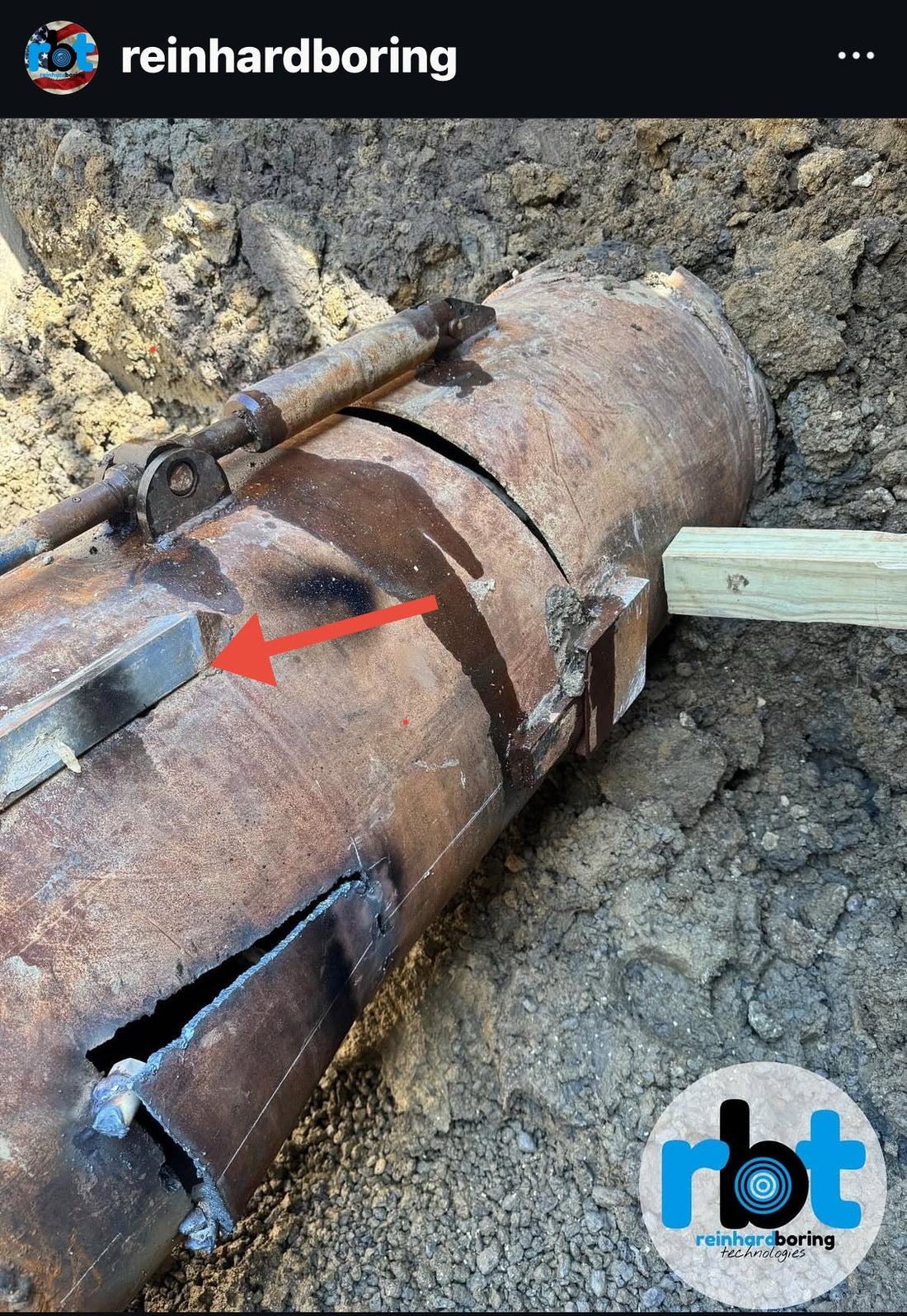
Why a Casing Compass on an Articulated Steering Head?
Share
Thank you Reinhard Boring for sharing this with us! Many of our customers put a Casing Compass on bores that have an articulated steering head. Some even mount a Casing Compass behind the articulation AND place a SECOND Casing Compass Micro on the articulated head itself. This begs the untrained eye to ask "WHY?"
- Water levels are common in the industry, but have an achilles heel. They (very accurately) measure ELEVATION of the casing, but give zero indication as to whether it is pointed upward or downward from its intended grade. The old addage "the only time he was on grade was when he was crossing it" still applies with a water level. Our steering head customers have found that they can find a sweet spot in the number of turns upward or downward to where the grade % of their bore remains consistent. This leads to straighter, more efficiently installed casing.
- Customers who use a Casing Compass Micro on the articulated head don't even have to "count turns" on the steering rod anymore. When 2 sensors are calibrated together before the bore starts, the operator ALWAYS knows the grade % of the head relative to the casing. What was once a guessing game turns into a numbers game. As the saying goes, "if you can measure it, you can manage it."
- As you can see here, Reinhard Boring cut Right / Left windows (shoes, wings, etc) into their casing. Line on this bore was crucial. By using a Casing Compass, they could check right / left line WITHOUT pulling augers. This saves hours for an entire crew every time those augers can stay in the casing.
